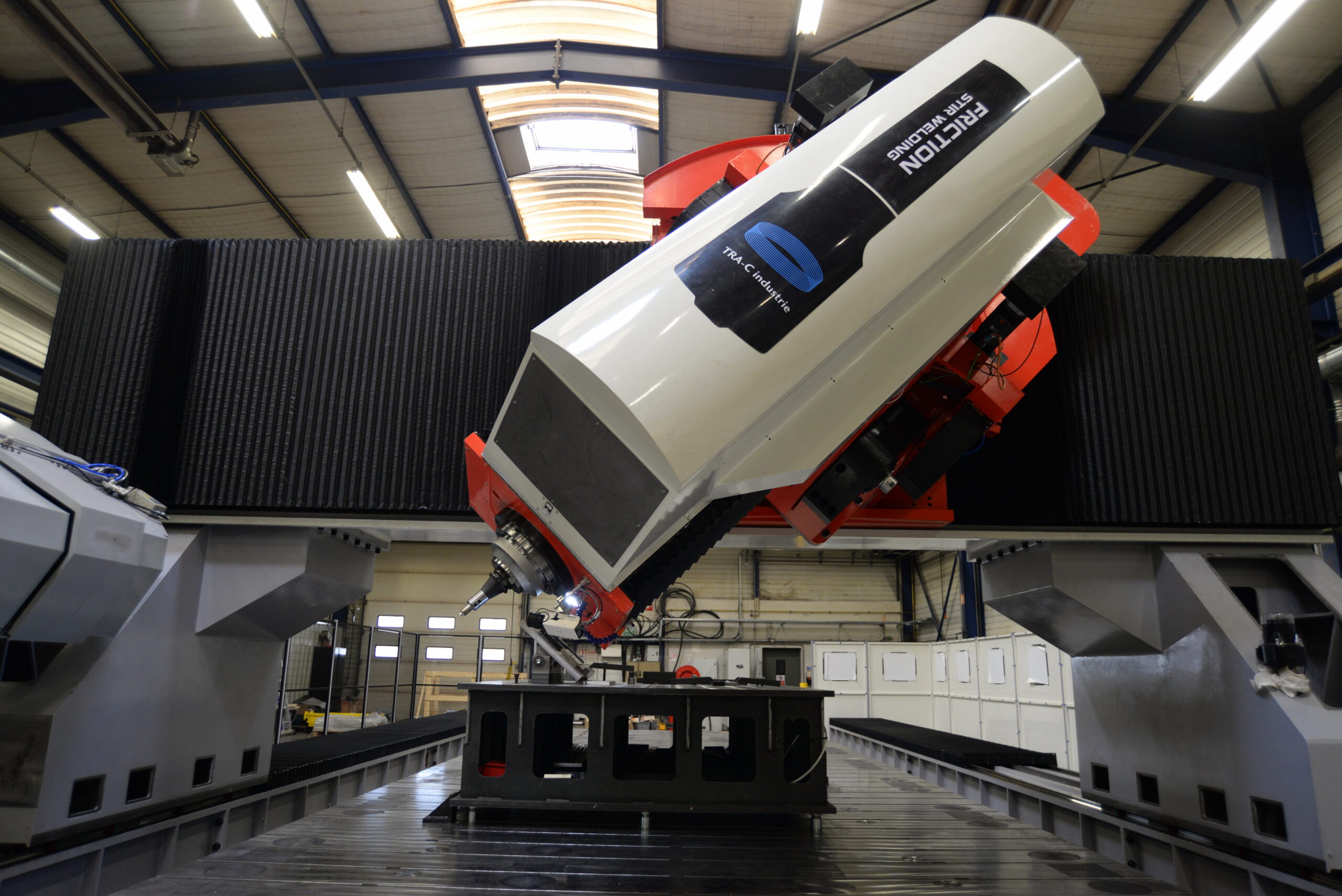Today, robotic welding is an essential part of modern production lines. It meets the growing demands for precision, repeatability and speed in many industrial sectors.
Among the most innovative processes is friction stir welding, or FSW, which is known by its absence of melting and its ability to join materials that are difficult to weld using conventional methods.
The integration of this process into robotic systems opens the way to new technical performances. It combines the efficiency of FSW with the flexibility and automation of industrial robotics.
But what does FSW robotized welding involve? In this article, TRA-C industrie presents the principles of robotized FSW welding, its fields of application, its concrete advantages and the technical challenges involved in its implementation…
What is robotic welding?
Robotic welding refers to the use of robots to automate welding operations. This equipment makes it possible to produce precise, repetitive and controlled welds, with consistent quality on large production runs.
Thanks to articulated arms and advanced control systems, welding robots can adapt to a wide range of geometries. This means they can execute complex trajectories and work on parts of all sizes!
This process also reduces dependence on manpower, improves safety by limiting operator exposure, and boosts productivity. It is therefore particularly suited to demanding industrial environments.
Finally, welding robotization can integrate different processes: MIG/MAG, TIG, laser and friction stir welding (FSW). This diversification opens up new prospects for high value-added applications.
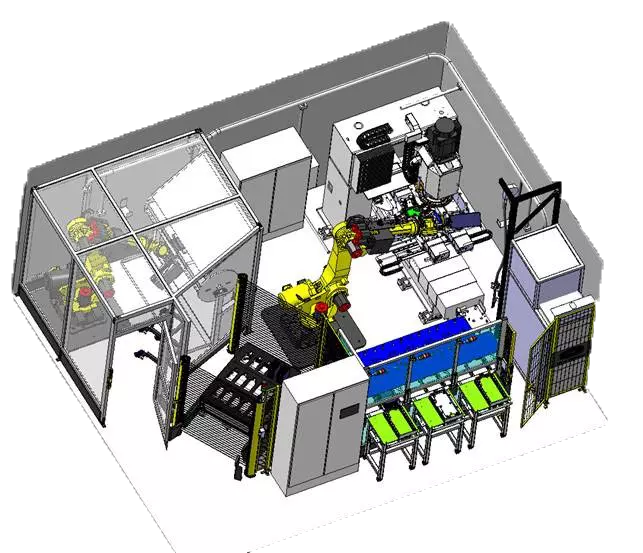
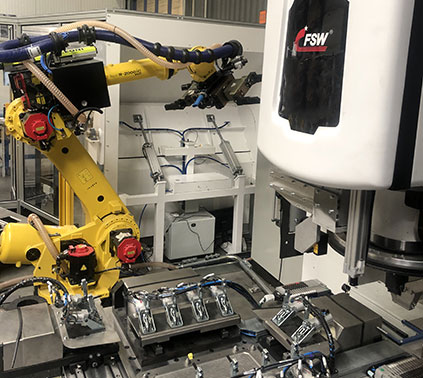
The friction stir welding (FSW) process
Friction stir welding is an innovative joining process based on mechanical friction. The rotation of a tool generates heat, plasticizing the materials at the point of contact and enabling them to be joined in a solid state.
The rotating tool, fitted with a tip, penetrates the parts to be welded and mixes the material. This action produces solid, homogeneous joints with few metallurgical defects.
The FSW process is particularly well suited to light alloys such as aluminum, but can also be applied to copper, certain steels and composite materials. It is known for the quality of the weld obtained and the low deformation of the parts.
With no metal input or melting, FSW guarantees excellent mechanical strength of assemblies. It meets the needs of demanding sectors such as aerospace, automotive and rail…
Integrating friction stir welding into robotics
Robotic friction stir welding is based on the combination of a robotic arm and a special FSW head. The robot controls the movement and orientation of the tool, while the head ensures rotation and precise control of the force applied to the workpiece.
FSW robot heads are designed to maintain perfect process stability. They incorporate high-precision motors, force sensors and cooling systems to guarantee consistent welding quality!
FSW tools, consisting of a spindle and a shoulder, are specially adapted to robotized applications. Their geometry varies according to the materials and thicknesses to be welded, to optimize mixing and joint quality.
The combined operation of the robotic arm and FSW head enables complex 3D trajectories to be followed. This opens the way to automated assembly of parts in a variety of shapes, with increased productivity and controlled quality.
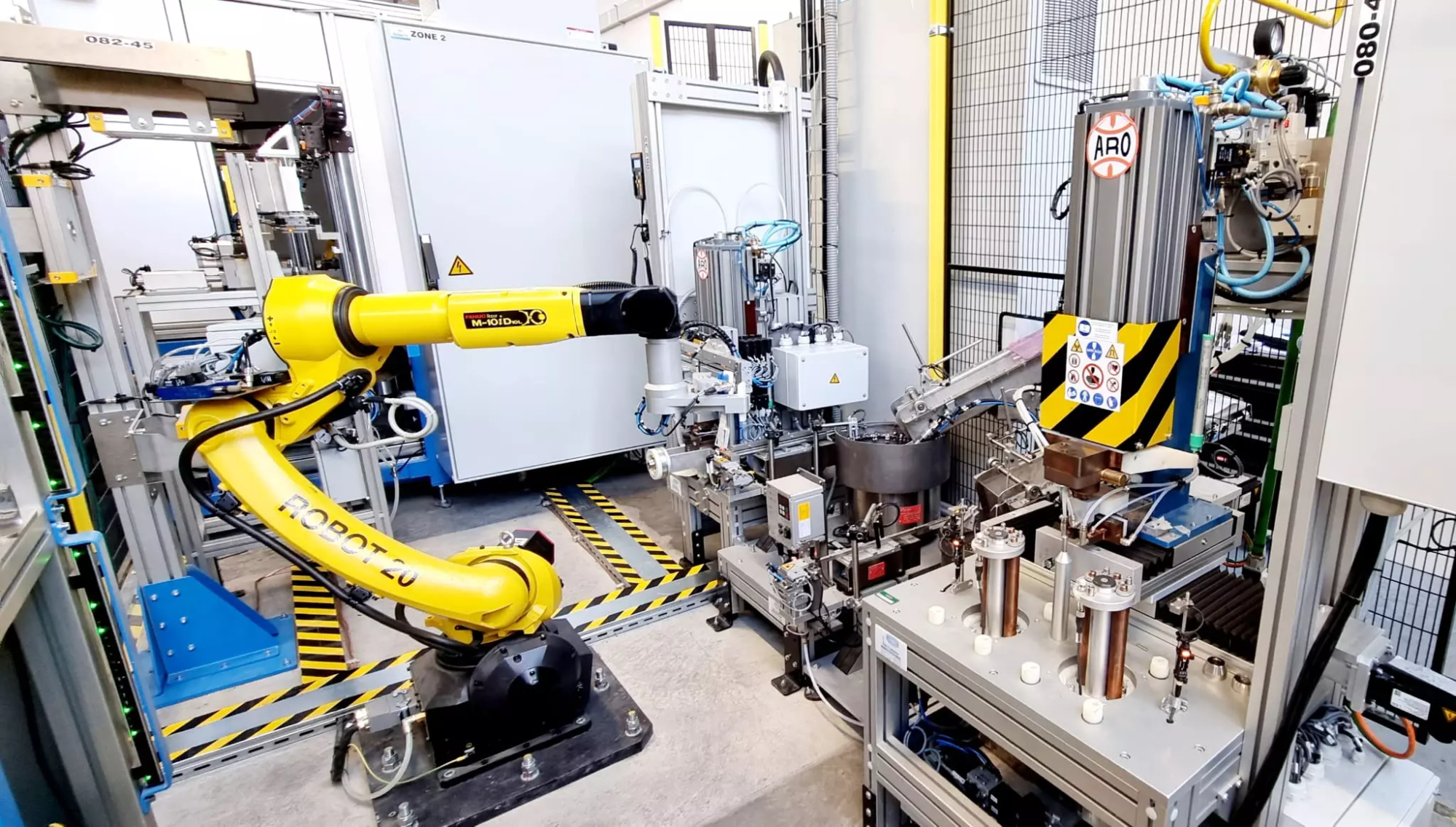
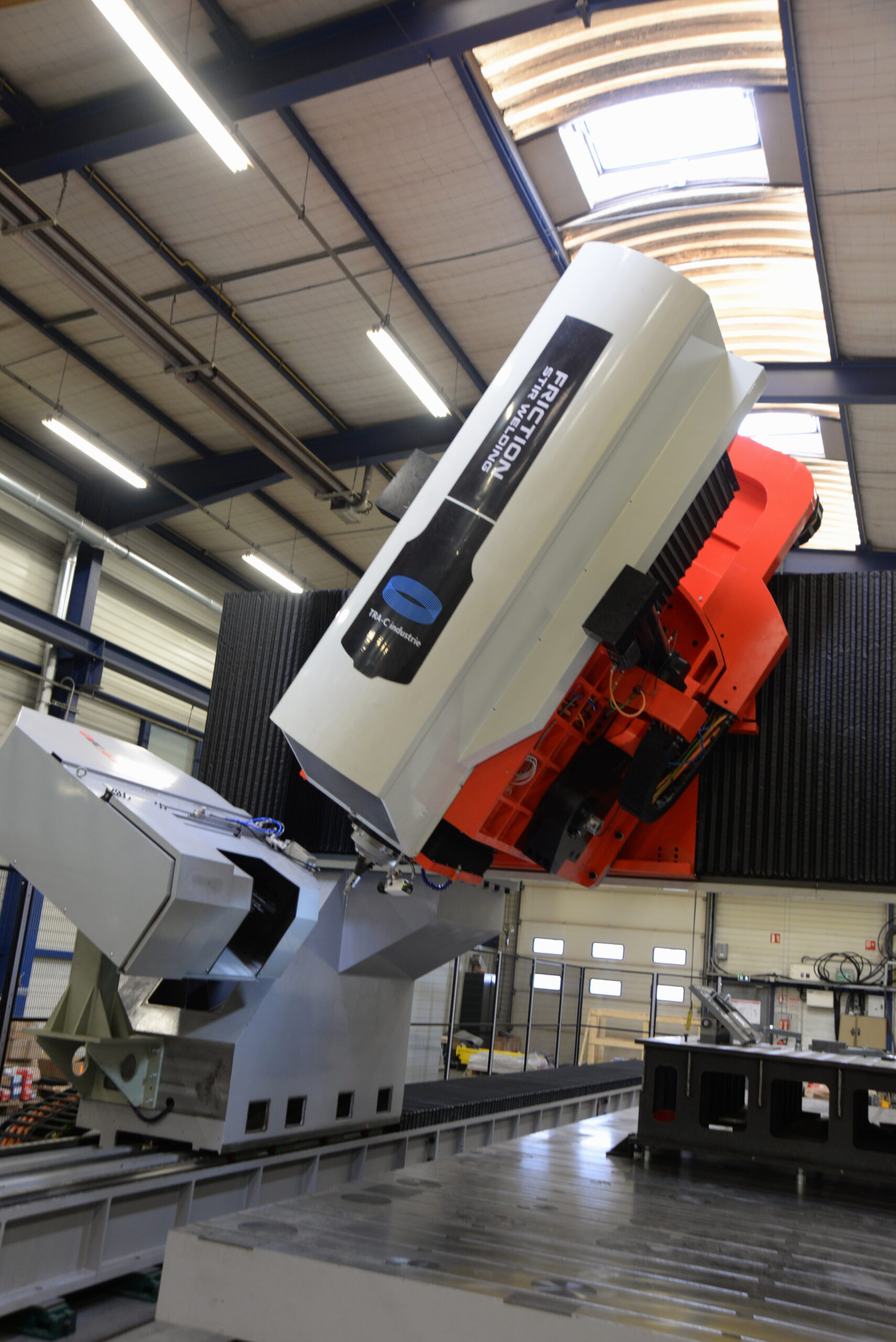
Industrial applications of FSW robotic welding
FSW robotic welding has applications in many industrial sectors. Its ability to produce solid assemblies, free from fusion defects, makes it a preferred choice for light structural parts.
In the aerospace industry, it is used to assemble aluminum panels and fuselage components. Its precise control reduces deformation and ensures high mechanical quality, essential in this demanding field.
In the automotive industry, robotized FSW is used to weld body components, battery trays, cooling plates and aluminum sub-assemblies. It helps make vehicles lighter, while guaranteeing fast, repeatable production…
The process is also used in the railway, power electronics and energy sectors. It facilitates the assembly of housings, coolers and complex parts, while offering excellent cost and quality control.
Quality and sustainability issues in robotic welding
The main aim of robotic welding is to guarantee consistent weld quality, even on large production runs. Thanks to precise parameter control, it reduces defects due to human variability and production conditions.
In robotized FSW, the absence of fusion limits porosities, cracks and other metallurgical defects. The resulting assemblies offer excellent homogeneity and stable mechanical properties over time.
The repeatability of the robotized process also ensures rigorous traceability. Every weld can be documented and controlled, an essential asset for industries subject to strict quality standards.
Last but not least, the durability of FSW assemblies robotized helps to extend the life of finished products. This mastery of performance is particularly sought-after in the aerospace, rail and automotive sectors!
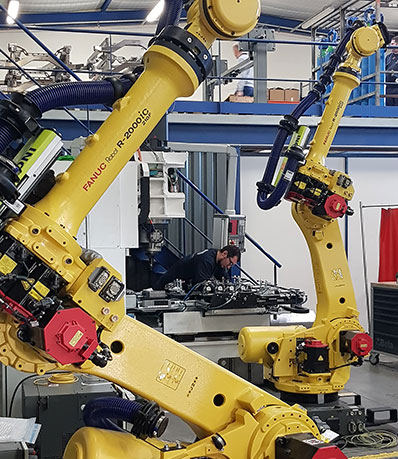
Benefits of robotic friction stir welding
Combined with industrial robotics, friction stir welding offers many specific advantages. It enables us to meet a wide range of industrial needs, over and above quality and durability requirements:
- Lower production costs: first and foremost, the robotized process optimizes cycle times and reduces the need for specialized manpower;
- Flexibility in part geometries: the robotic arm can also weld large or complex shapes that are difficult to handle in stationary mode;
- Easy integration into production lines: the robotized FSW can be easily integrated into existing automated lines, facilitating line modernization;
- Environmentally-friendly, energy-efficient process: FSW also consumes less energy than fusion processes, and generates little waste or emissions;
- Simplified plant maintenance: FSW robotic systems require less maintenance than traditional welding equipment;
- Optimized production times: finally, robotization secures production commitments thanks to better control of lead times.
The benefits of a specialist in FSW robotic welding
Calling on a specialist in FSW robotic welding guarantees precise, reliable work that meets industrial requirements. Calling on a professional who masters the particularities of the process also optimizes costs and production times.
A recognized player in the welding sector, TRA-C industrie is an expert in the design, development, integration and maintenance of industrial friction welding robots. We offer solutions tailored to the specific needs of each customer!
In addition, we also provide training for your operators to ensure optimal and safe use of the equipment. This comprehensive approach guarantees lasting autonomy in the operation of robotized welding systems.
TRA-C industrie also works closely with specialist robotics suppliers such as Fronius, SEI-Roboprod and Fanuc. These strategic partnerships enable us to integrate cutting-edge technologies and provide high-level technical support.
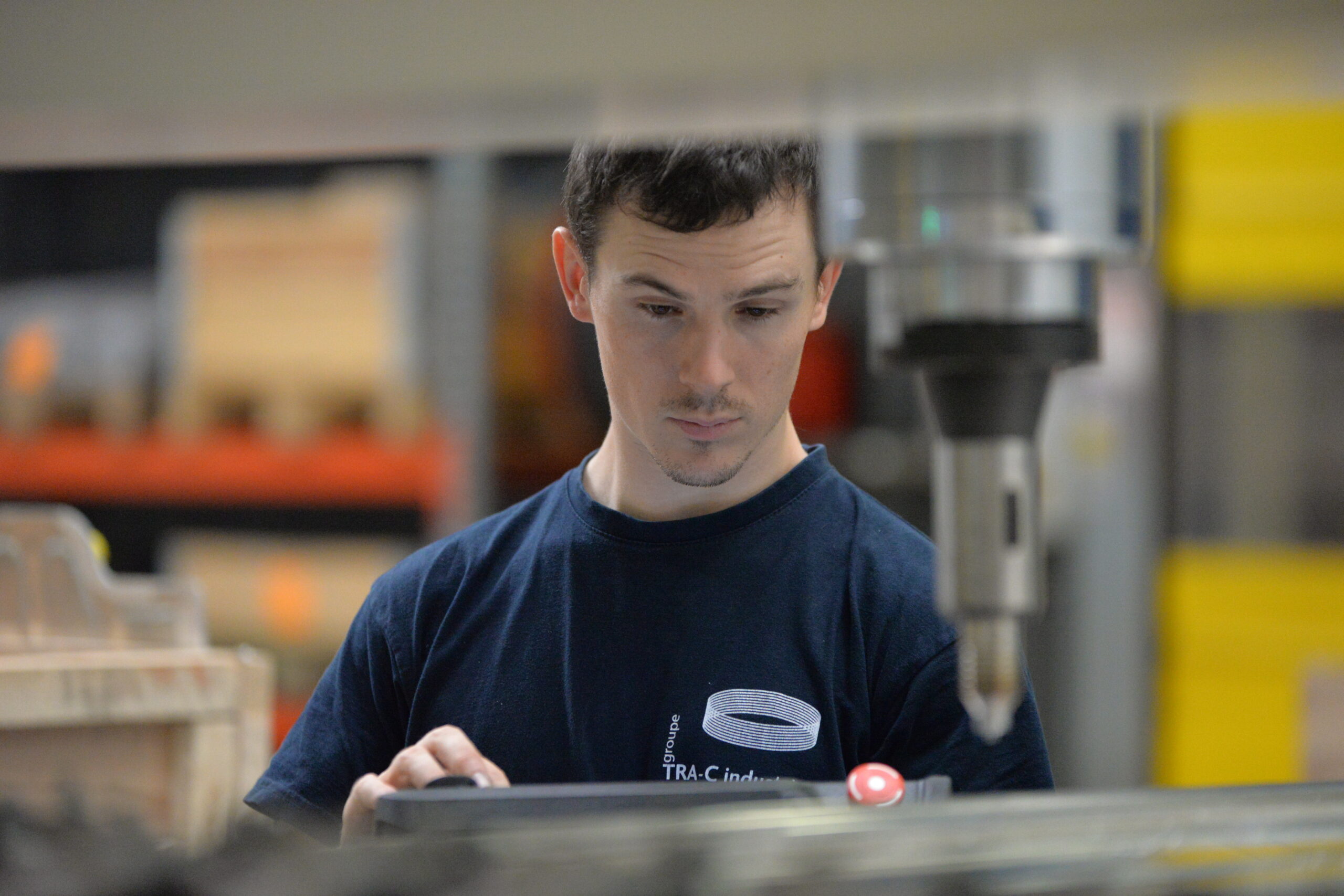
Would you like to automate your processes thanks to robotic welding?


